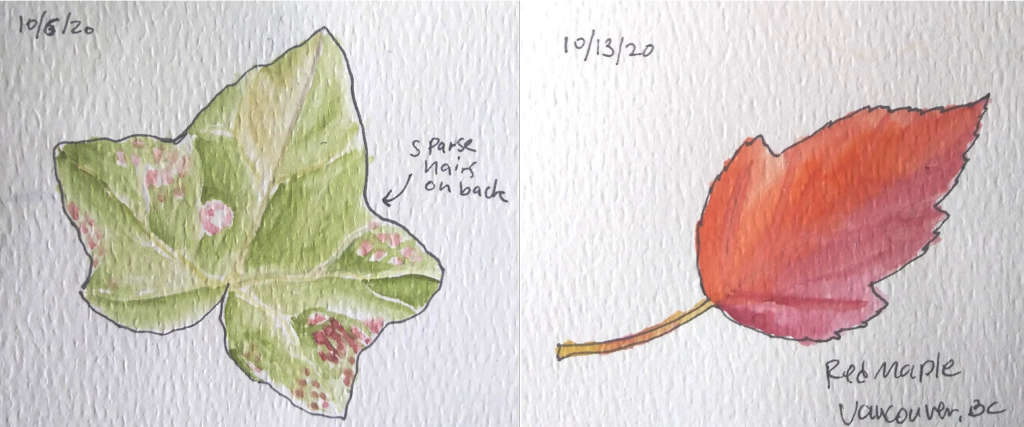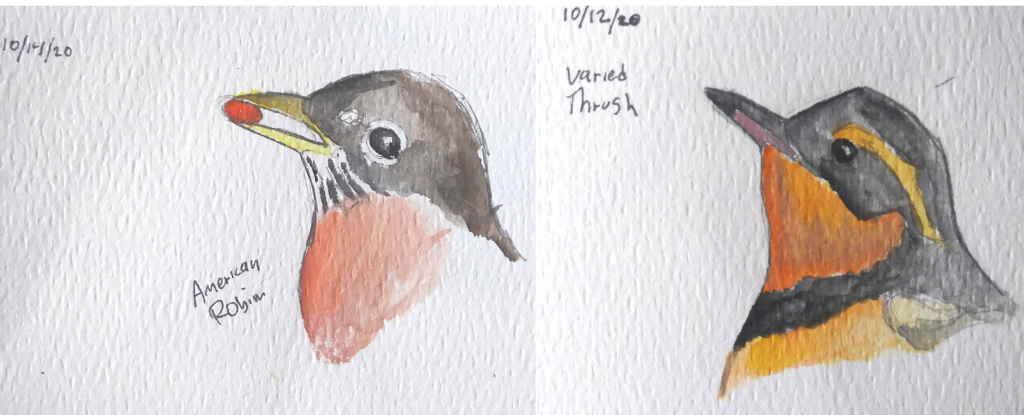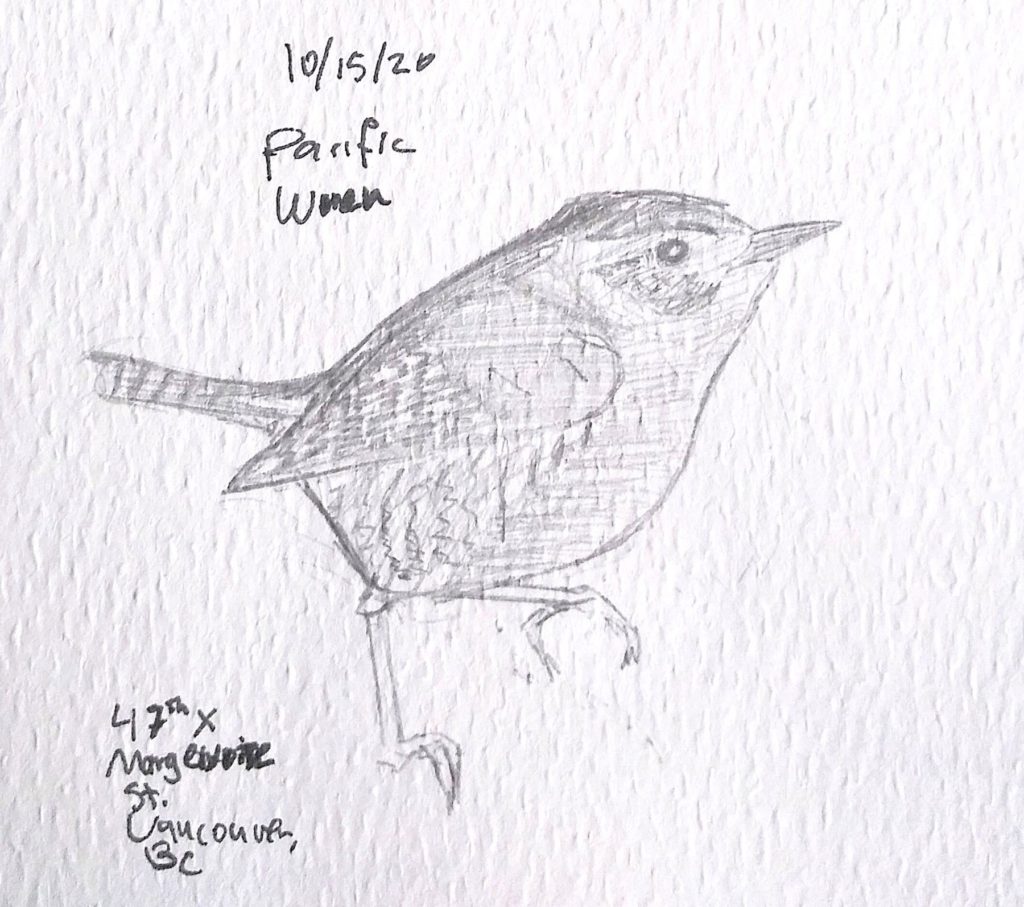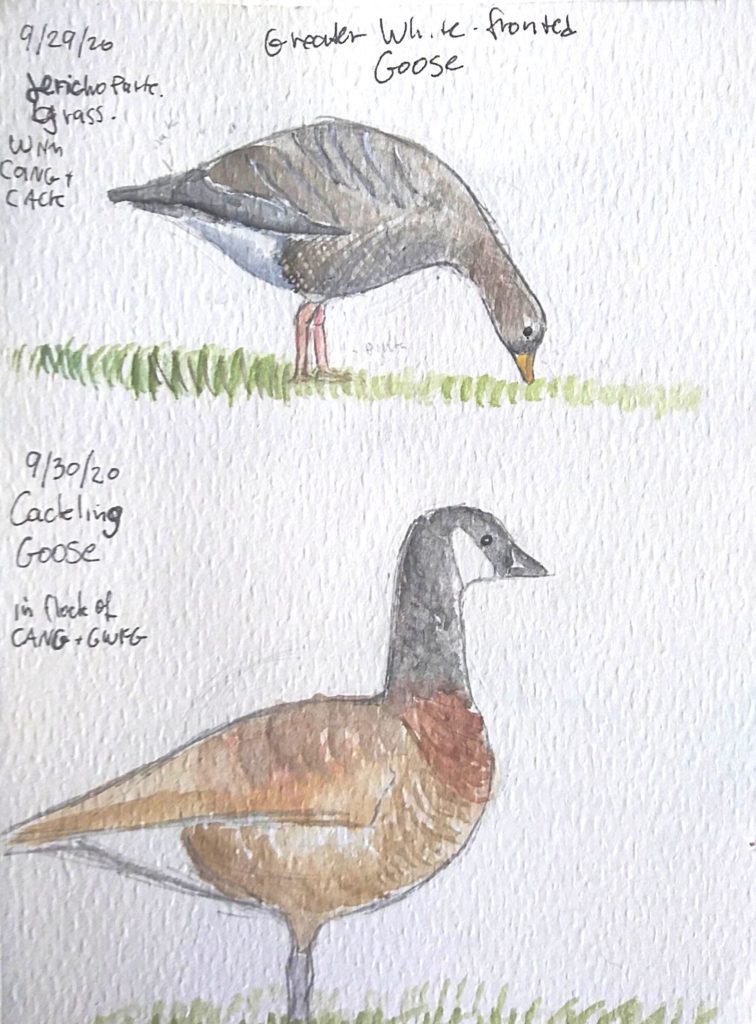Research Update
Notes from the field | November 2020
Greater Vancouver Urban Landbird Count
As Vancouver’s trees change colour, the birds hopping about in them are also changing.

My surveys no longer turn up most warblers and flycatchers, but other birds have taken their place in my datasheets, including thrushes. Thrushes are large birds that include robins. In fall, American Robins spread out across the city to gorge on berries — especially mountain-ash berries.
And if you’re lucky, when you watch a mountain-ash tree, you’ll also find Varied Thrushes. Their populations have declined precipitously in the last few decades, but these bountiful mountain-ash trees may be helping them. The bird surveys I’m conducting will hopefully shed light on what types of trees might help them.

But the most surprising change that fall has brought to Vancouver involves a minuscule brown bird. These birds act almost like mammals sometimes, scuttling across fallen needs lining the forest floor. These Pacific Wrens spend their summers singing cascading tinkling songs in the depths of the forest. But on my most recent survey in the West End, I heard a young juvenile practicing his song from a tiny ornamental yew bush beside an apartment building.

Pacific Wrens must have had high breeding success this year, and now the younger birds are being pushed out into sub-par habitat. Urban brushy areas could help ensure that these little feathered sprites make it through the winter.
Canada Geese are a typical sight in grassy areas near Vancouver’s shoreline, and autumn doesn’t change that. But, look more closely at these geese. In amongst a flock of lumbering Canada Geese, you might spot one that looks weirdly small. “Honey, I shrunk the goose!”
In fact, these tiny geese are neither the effects of magic, youth nor malnourishment, but a different species called Cackling Geese. If you’re really lucky, you might also see Greater White-fronted Geese or Snow geese, too!

Fall brings changes in Vancouver’s trees and birds. The city is full of surprises, and not just on Halloween.
Stay Connected!
More information about these projects is on our Cats and Birds Research Projects page.
Follow our Facebook Cats and Birds Page and other social media for research updates and findings.





